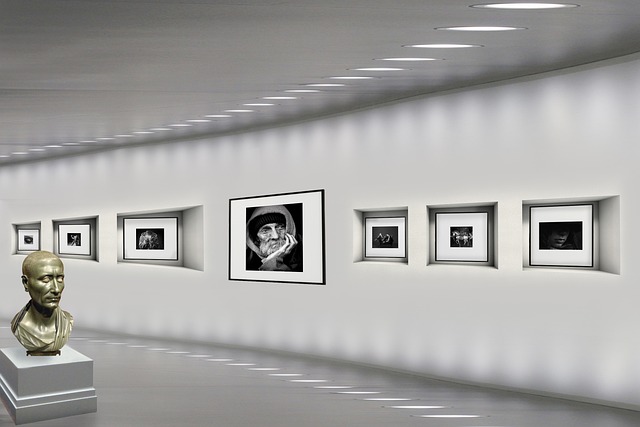Art is a tapestry woven from various forms of creativity, each thread contributing to the intricate design of human expression. Within this rich fabric, the fusion of sculpture and painting forms a unique and captivating genre the portrayal of statues through the medium of painting. These artworks invite viewers to explore the interplay between three-dimensional sculpture and two-dimensional representation, offering a dynamic perspective on form, texture, and the synthesis of artistic realms.
The Marriage of Sculpture and Painting
Paintings depicting statues offer a captivating dialogue between two distinct art forms. These compositions capture the tactile essence of sculpted forms while exploring the nuances of color, light, and shadow that painting affords. Through skilled brushwork, artists evoke the solidity of marble, the softness of flesh, and the intricate details of sculpted figures, effectively transforming static stone into vibrant narrative.
By translating sculpture into the realm of painting, artists are given the creative freedom to experiment with perspective, emotion, and atmosphere. The choice of materials, whether oil, watercolor, or acrylic, allows for a variety of textural effects, enhancing the visual and tactile experience of both the statue and its surroundings.
Breathing Life into Stone
The challenge of translating three-dimensional sculptures into a two-dimensional medium lies in capturing the depth, volume, and tactile qualities of the original form. A skilled artist employs techniques like shading, highlighting, and perspective to create the illusion of dimensionality on a flat surface. Through these techniques, the stone takes on a lifelike quality, and the viewer is invited to feel the curves, contours, and presence of the sculpted figures.
Exploring Historical and Cultural Narratives
Paintings depicting statues often extend beyond mere replication, delving into historical narratives and cultural contexts. These artworks become conduits for storytelling, preserving the myths, legends, and historical moments immortalized in the statues they portray. Artists have the opportunity to reinterpret and breathe new life into ancient sculptures, framing them within a contemporary artistic dialogue that resonates with modern audiences.
Through these artworks, viewers are transported to the eras in which the statues were created, gaining insight into the values, beliefs, and aesthetics of those times. The paintings serve as windows through which we can connect with the past, making history come alive in vivid and evocative ways.


The Emotional Resonance
Paintings of statues transcend the limitations of their subject’s materiality to delve into the realm of human emotions. Artists skillfully infuse these artworks with sentiment, transforming cold stone into figures that embody love, sorrow, contemplation, and joy. The juxtaposition of the statues’ stony expressions with the warmth of human feelings creates a compelling tension that draws the viewer into a unique emotional space.
These paintings encourage viewers to consider the stories behind the sculptures the emotions they represent, the stories they tell, and the human connections they evoke. This emotional resonance connects us not only with the artworks themselves but also with the artists who translated the sculptures’ essence onto canvas.
Reinterpretation and Transformation
One of the remarkable aspects of paintings depicting statues is their ability to reinterpret and transform familiar forms. Through the lens of an artist’s unique perspective, statues that have been immortalized in countless photographs and books take on new life. Artists can play with color schemes, lighting, and contextual elements, reshaping the viewer’s understanding of the sculpture and inviting them to see it in a fresh light.
This reinterpretation brings a sense of vitality to iconic works, encouraging viewers to engage with the art on a deeper level. By reimagining these statues, artists not only pay homage to the original sculptors but also create a bridge between past and present, tradition and innovation.
The Intersection of Artistic Techniques
Paintings of statues exist at the intersection of artistic techniques, inviting artists to engage in a dialogue between sculpture and painting. This unique convergence requires a deep understanding of both mediums and an ability to harmonize their qualities. The artist must translate the tactile sensations of sculpture into visual impressions, and in doing so, infuse new meaning into the statue’s form.
This artistic crossroads sparks innovation and exploration. Artists experiment with textures, brushwork, and color palettes to create a symbiotic relationship between the sculpted subject and the painted canvas, resulting in an artwork that pays homage to two distinct art forms while forging a path of its own.
Capturing the Ethereal Essence
The allure of paintings depicting statues lies not only in their ability to replicate physical forms but also in their capacity to capture the ethereal essence that sculptures embody. Beyond the cold stone, artists convey the stories, beliefs, and ideals that these statues represent. Through artistic interpretation, a lifeless figure can become a vessel for cultural significance, spiritual devotion, or artistic innovation.
In religious and mythological contexts, these paintings transcend the limitations of the physical to tap into the spiritual realm. Figures carved from marble, representing deities or legendary heroes, are infused with a sense of divinity through the artist’s brushwork. The interplay between the earthly material and the otherworldly narrative creates a visual dialogue that stimulates contemplation and invokes a sense of wonder.
Metamorphosis and Symbolism
The transformation of sculpture into painting allows for the exploration of symbolism and metamorphosis. Artists can accentuate certain elements of a statue to emphasize its symbolic importance, guiding the viewer’s interpretation. By highlighting particular details, such as a gesture, an accessory, or a facial expression, the artist directs the narrative and evokes specific emotions.
This metamorphosis can also extend to the broader context. The choice of background, lighting, and composition can alter the way the statue is perceived. The juxtaposition of a classical statue in a contemporary urban setting or against a surreal backdrop invites viewers to engage in new dialogues between past and present, tradition and innovation.
Conclusion
Paintings depicting statues offer viewers a multisensory experience an immersion into the tangible and the imaginative, the sculpted and the painted. Through the synergy of these two art forms, artists capture the essence of statues, translating their forms, emotions, and stories onto canvas. In each brushstroke and each stroke of the chisel, a unique narrative unfolds one that connects history with the present, invites us to explore the depths of human expression, and stands as a testament to the enduring power of creativity.